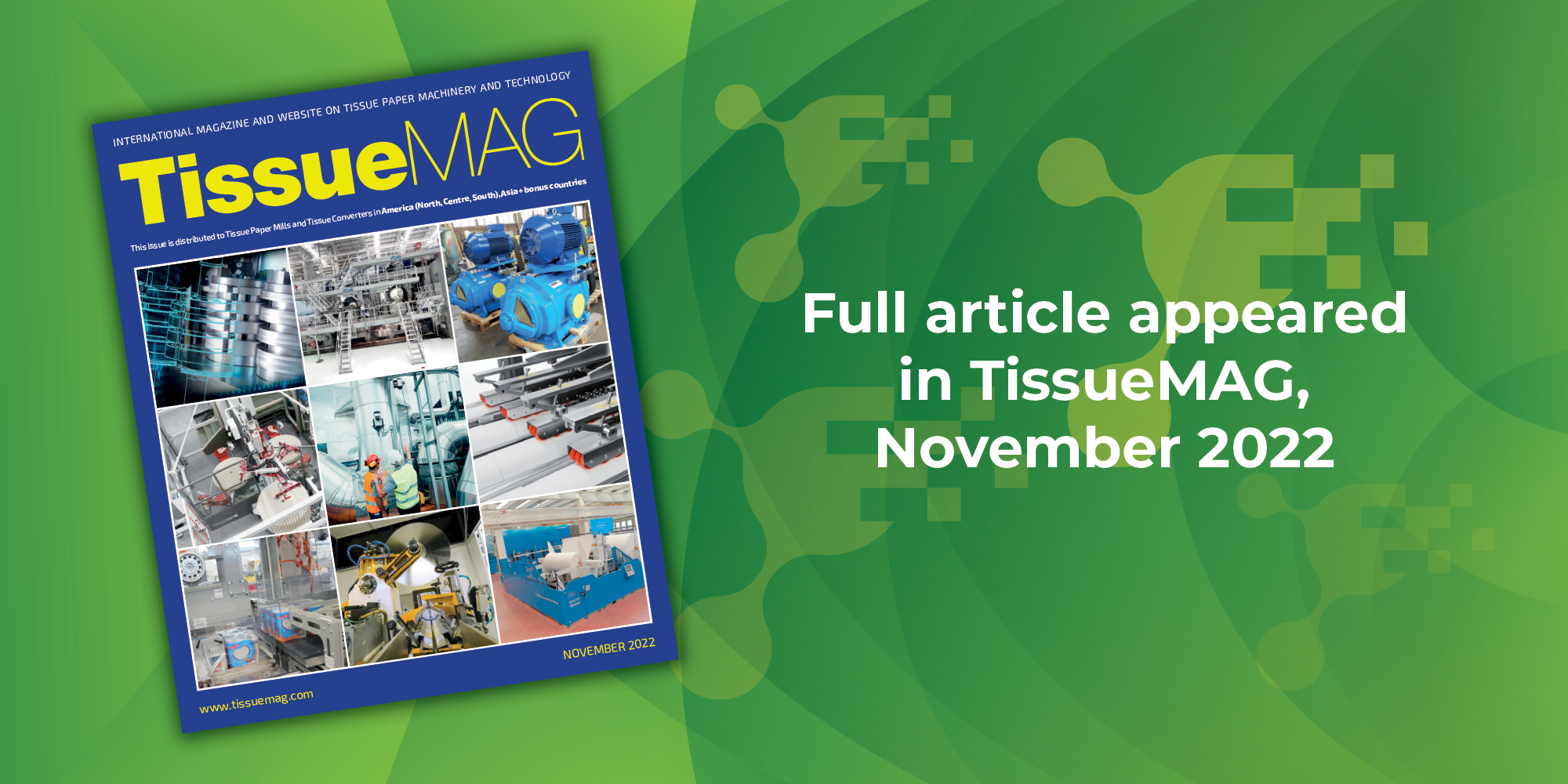Rising cost of energy and pulp give credence to use of hybrid structured technology

The silver lining of external forces within the tissue industry have given rise to improvements in costs and efficiencies. A prime example is structured tissue machines, the latest of which are engineered to be able to forego the through air dried sections of the dominant platform approach.
Creating a structured base sheet without the need for evaporation via a Through Air Dryer (TAD) results in increased bulk to basis weight as compared to conventional processes. This hybrid tissue approach, producing high quality base sheets at lower basis weights, saves energy and money especially considering the rising cost of pulp. Here is a look at how it is done.
Efficient Dewatering Processes
Characteristic of the new type of hybrid structured machine is a more efficient dewatering process which incorporates vacuum, belt pressing and shoe presses that protect the sheet structure. This is facilitated by methodologies specific to this type of machine which are employed during the process. With the hybrid structured machine, when the sheet is transferred to the Yankee, it has a higher moisture level compared to the traditional TAD process. As a result, the Yankee and hood sections yield higher capacities compared to typical TAD machines (some of which have no hoods).
This critical step in the process holds significant potential for cost savings and positive impact on the bottom line given the contrast in efficiency between this method and that of evaporative drying which imposes a cap on production. Europe’s tissue industry feels this most keenly given its reliance on natural gas for hood operation.
The potential of this hybrid structured platform has caught the attention of several OEMs. In addition, a handful of tissue companies – most notably NTT and QRT by Valmet, ATMOS by Voith and eTAD by Georgia-Pacific — have invested in developing proprietary hybrid structured technology.
Common Challenges and Solutions for Hybrid Structured Tissue Technology
Given the nascent nature of hybrid structured tissue technology, two common challenges tend to surface among companies focused in this area: intimate transfer of the web and a temperature intolerance of existing Yankee coating chemistry.
The challenge is to find a chemistry that manages moisture level along with the variability inherent from one machine to another. By doing so, one can achieve uniform creping energy across the sheet, avoiding highly variable reel build across the roll width. The solution is important to forgo poor reel build which is more than an aesthetic concern. Variability telegraphs the bulk to basis weight and quality variation of the base sheet, creating difficulty on the converting lines. When that occurs, it creates lower line speeds, and in worse case scenarios, high cull numbers.
The goal is intimate and uniform transfer of the sheet from the structured fabric to the Yankee. This fosters high speed production and a value-added creping process. Higher speeds foster higher Yankee surface temperatures which, in turn, harden the prevailing Yankee coating packages which are PVOH-heavy in their composition. If not correctly modified, this can shrink the operating window.
Working with Buckman
It makes sense to consult with a partner that can address issues. What we have learned is that minimizing the use of PVOH and its correct modification produces a more temperature tolerant coating and coating film that can be doctored, leading to fewer blade changes, reduced risk of chatter and quality, and performance that is more consistent and reliable.
New adhesive technology options provide hybrid structured manufacturers with optimized coating packages that perform under challenging nip transfer conditions.
New approaches not only minimize PVOH use but are streamlined with fewer individual components for operators to have to manage. Correctly matching the chemistry when working in variable environments and machinery setups requires an experienced, analytical approach.
At Buckman, we begin with an audit of the existing process compared to available chemistry options. This way, the manufacturer can understand which chemistry properties will be most critical to help achieve quality and productivity goals. At the end of the day, efficiency and quality translates tangibly to the bottom line.
Learn more about how Buckman can partner with you to create custom solutions on our website:
Yankee Coatings for Hybrid | TAD+® Chemistries for Structured Tissue | Dust/Lint Control | Watch the Webinar | Read the Article